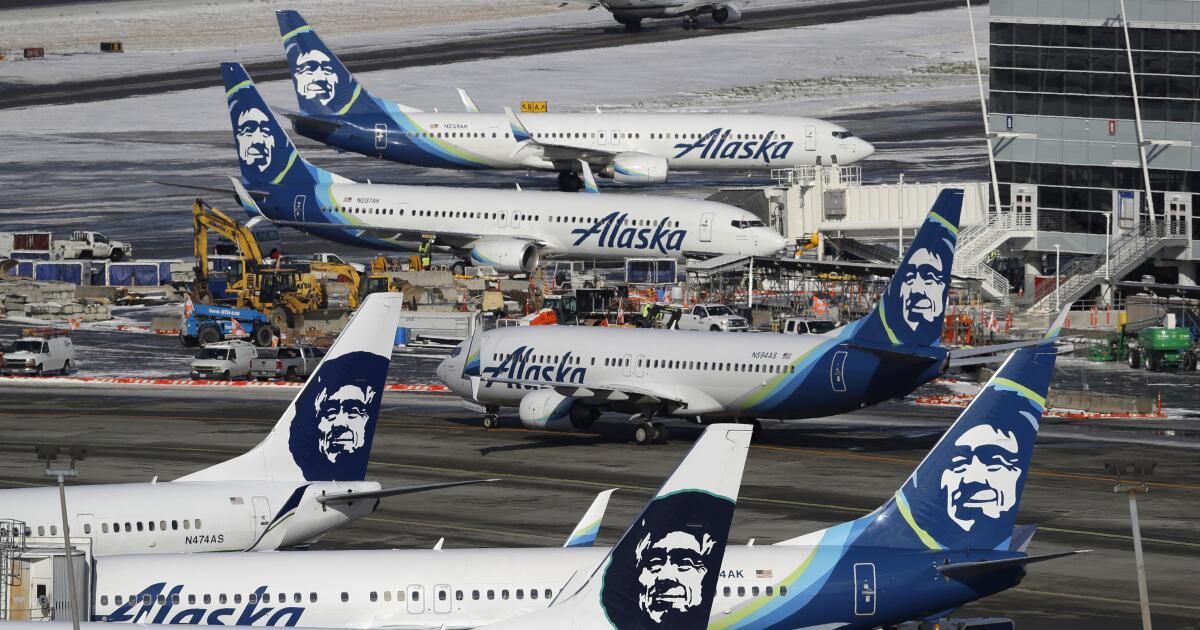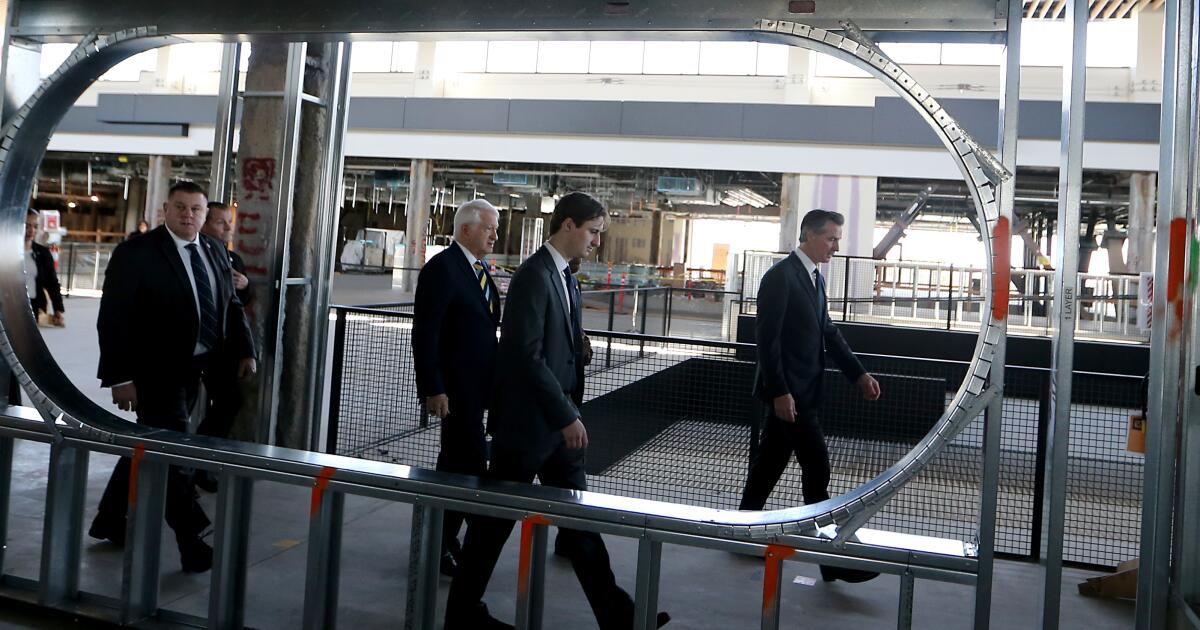As investigators examine what caused a panel on an Alaska Airlines plane bound for Southern California to come off mid-flight, forcing an emergency landing in Portland, federal officials on Sunday pointed to a major obstacle: the recorder cockpit voice, or black box, on Friday night. The flight was deleted.
Jennifer Homendy, chairwoman of the National Transportation Safety Board, said at a news conference that after Alaska Airlines Flight 1282 returned to Portland International Airport, no one turned off the circuit breaker on the cockpit voice recorder or He did not otherwise preserve the audio, which contains only his most detailed information. last two hours.
“The cockpit voice recorder was completely overwritten. There was nothing on the cockpit voice recorder,” Homendy said.
Among other revelations, the NTSB chief also announced that a Portland teacher had found the door stopper the agency had been searching for. Additionally, he said that before Friday’s midair incident, the plane had been banned from long flights over water because of a warning light that had come on repeatedly over the past month.
But Homendy was visibly exasperated by the loss of the black box recording. He noted that it was a “very chaotic event” when the plane landed and officials set up an emergency operations center.
“The maintenance team went out to look for [the cockpit voice recorder]but it was around two hours,” he said, and then added: “We don’t have anything.”
Homendy emphasized that the audio could have illuminated what exactly happened when a door plug exploded as the plane reached an altitude of 16,000 feet. He pointed to 10 other recent incidents in which voice recorders were overwritten, including a near-catastrophe in 2017 at the San Francisco airport when an Air Canada plane nearly landed on a taxiway and collided with other planes carrying about 1,000 passengers. .
He called on the Federal Aviation Administration and Congress to implement a rule that would require new and existing aircraft to store audio for 25 hours, which aligns with European audio retention practices.
The burst door plug of an Alaska Airlines Boeing 737-9 MAX after its return Friday night to Portland International Airport.
(Uncredited / The Oregonian via Associated Press)
“If that communication is not recorded, unfortunately it is a loss for us and a loss for the FAA and a loss for safety,” he said, “because that information is key.”
Alaska Airlines did not respond to questions about the cockpit voice recorder or whether the airline would voluntarily install recorders that store audio for 25 hours.
The incident forced Alaska Airlines and United Airlines to ground their Boeing 737-9 Max planes (and cancel hundreds of flights) while they inspect their fleets and prevent future explosions. Both airlines said they were working to clarify the inspection process in order to return the 737-9 Max planes to service.
Homendy also offered new details about what happened on the Alaska Airlines flight, including that the door plug that exploded was found in the backyard of a Portland teacher identified only by his first name.
“Thank you, Bob,” Homendy said.
The teacher contacted the NTSB at [email protected] and sent two photographs of the fuselage piece, which was described as a 63-pound piece of the plane that is greenish-yellow on one side and white on the other. . Two mobile phones that fell from the plane were also found nearby.
The NTSB chief revealed that Alaska Airlines had blocked the plane from being used on flights to and from Hawaii due to a warning light that had come on at least three times, possibly indicating a pressurization problem on the plane.
The warning light came on during the Dec. 7, Jan. 3, and Jan. 4 flights, and each time, maintenance crews tested and then reset the light.
“We don’t know if there was any correlation” between the warning lights and what happened during Friday night’s flight, Homendy said. But Alaska Airlines had restricted that plane to transcontinental routes so the plane could return to an airport during an emergency, she said.
Because the pressurization light had gone out several times, additional maintenance was ordered on the plane but had not yet been performed before Friday’s flight.
When asked to offer any theories about what caused the plane’s door plug to burst, Homendy demurred.
“Right now we are in a fact-finding phase,” the NTSB chief said, adding that staff were thoroughly examining the Boeing 737-9 Max aircraft for clues and planned to send key components to a lab for analysis. any fracture. paint marks and cuts that could help explain what happened.
Upon inspecting the plane, officials found damage to more than a dozen rows inside, but did not identify any structural damage to the plane. The “plug” that broke away from the plane covered an unused emergency exit opening near rows 25 and 26, and was essentially bolted to the airframe. The socket was covered with panels and included a window so that, from inside the cabin, it appeared indistinguishable from other rows.
On Monday, investigators planned to examine the door stopper on the other side of rows 25 and 26 to try to determine what caused the other stopper to come loose.
Homendy praised the flight attendants and pilots for their quick response in a frightening environment plagued by communication problems.
Passengers and crew reported hearing “a pop,” he said, when “explosive decompression” occurred after the plug was ejected from the fuselage.
“It was described as chaos, very loud,” he said. The cockpit door was flung open and the captain partially lost and the first officer completely lost their respective headsets.
“Flight attendants reported that it was difficult to get information from the flight deck and that the flight deck also had difficulty communicating,” Homendy said.
The plane had six crew members and 171 passengers, including three babies and four unaccompanied minors.
“The flight attendants were very focused on what was happening with those children. Were they safe? Were they sure?
In a stroke of luck, two seats were empty right next to where the gaping hole opened in the plane.
The seats in that area showed signs of damage, including broken oxygen masks, missing headrests and twisting.
“There was a lot of damage to the interior panels and trim,” he said. “It must have been a terrifying event to experience.”












